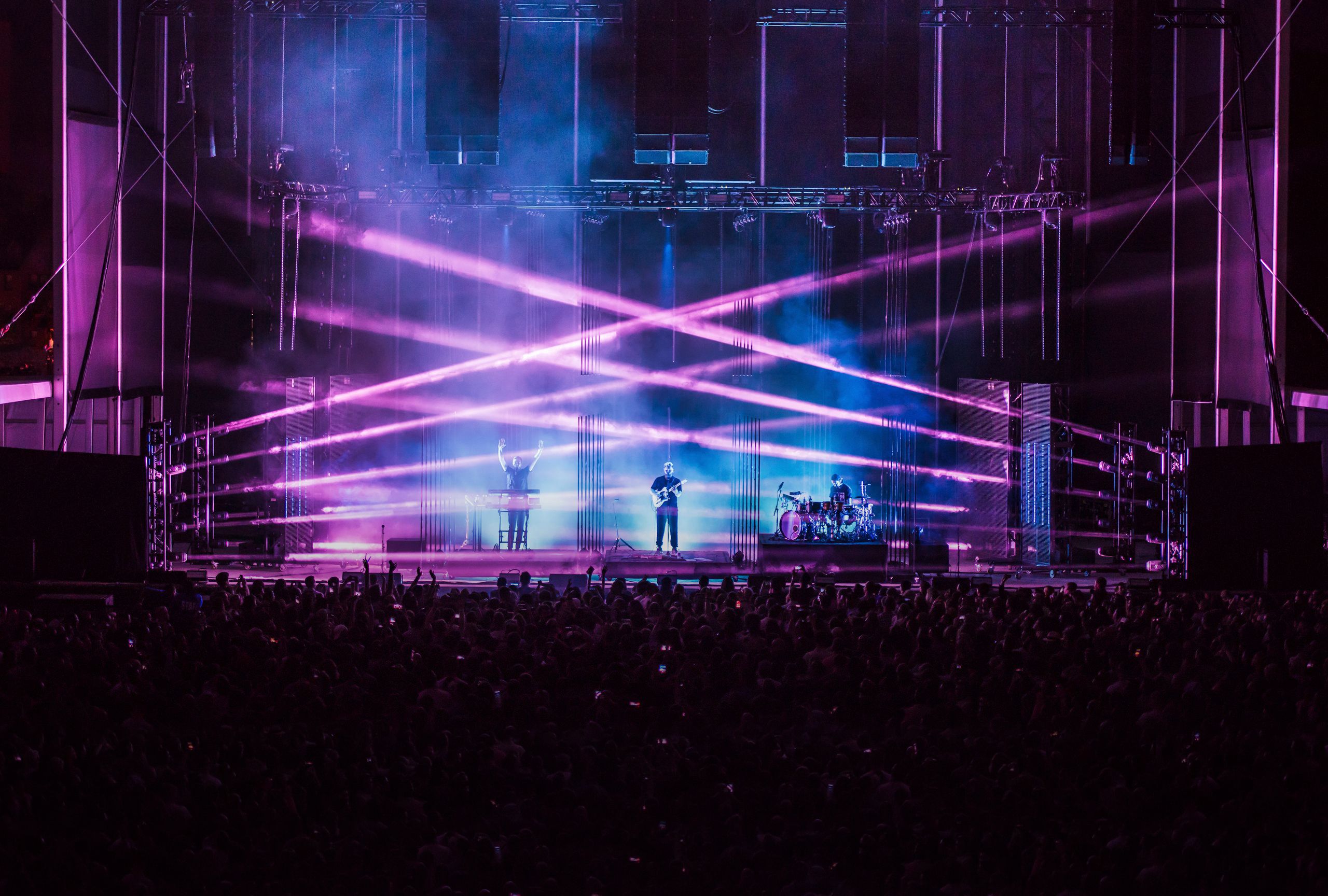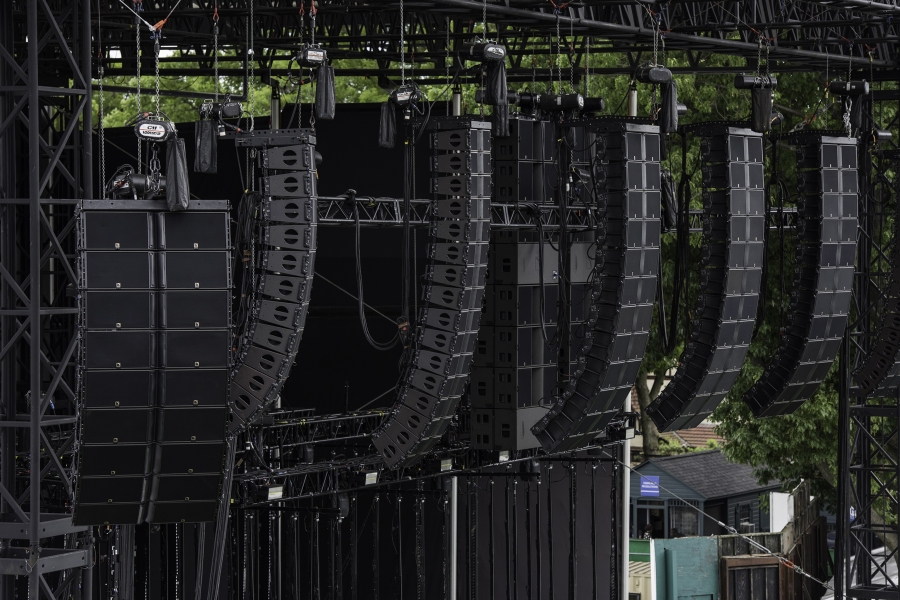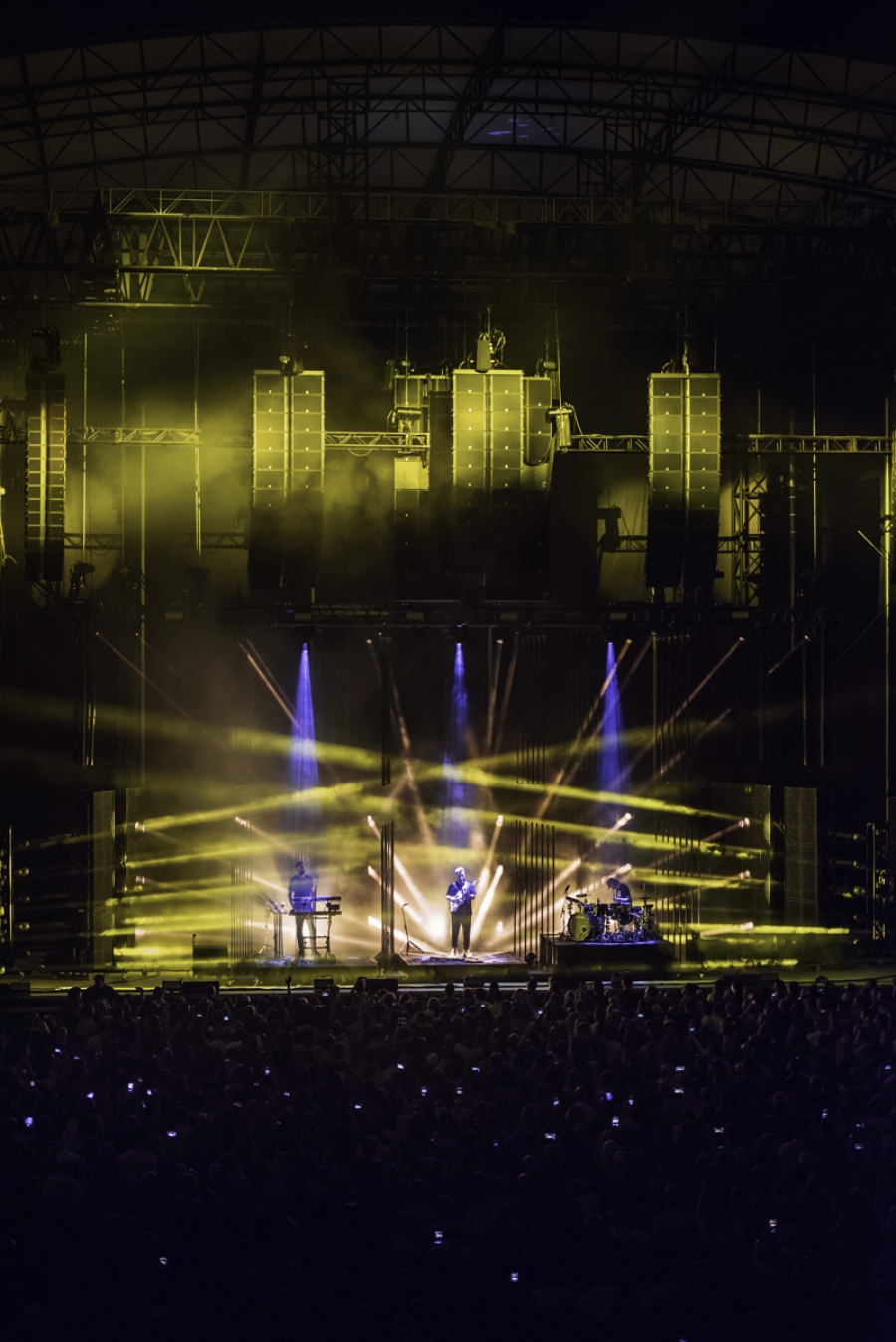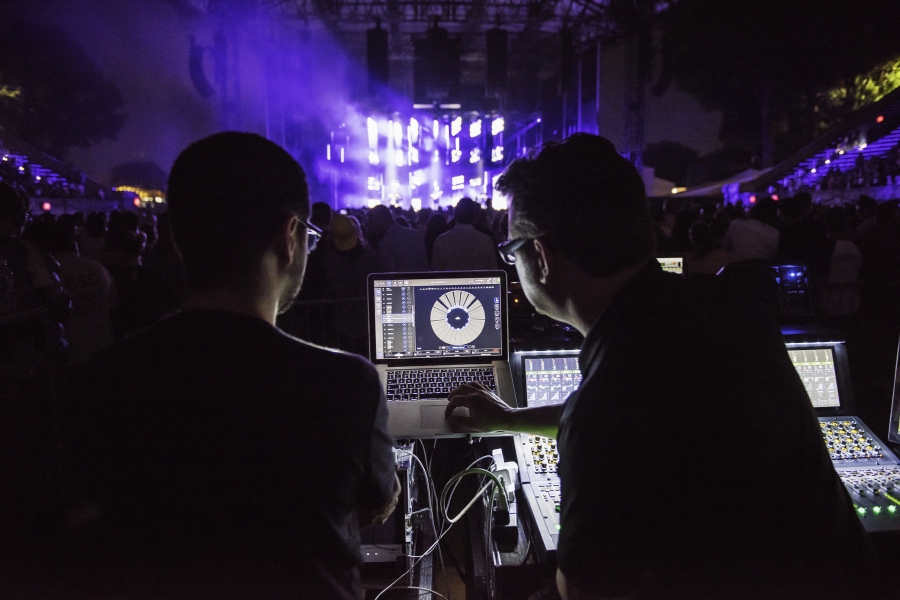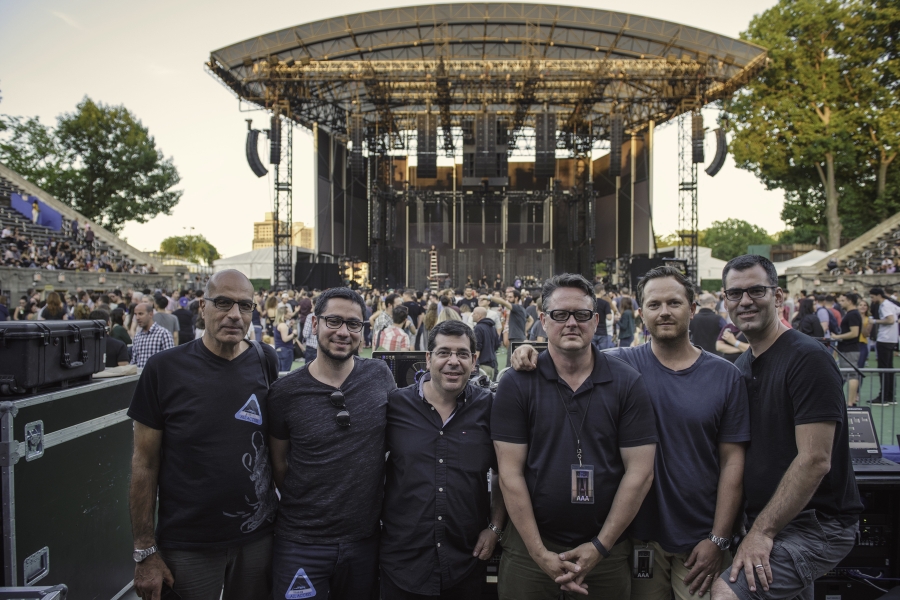Rat Sound deploys full L-Acoustics surround system for one-of-a-kind performance at New York City’s famous tennis and concert venue
UK band alt-J, currently on a world tour in support of their third studio album, 2017’s Relaxer, recently made history as the first rock band to use L-Acoustics’ groundbreaking L-ISA Immersive Hyperreal Sound technology to envelop nearly 12,000 fans in a 360° soundscape at Forest Hills Stadium in the New York borough of Queens on June 15.
“Wherever you’re standing in the audience, you’ll be able to hear the music coming from all around you,” alt-J keyboardist Gus Unger-Hamilton told UK music publication NME ahead of the show.
Lance Reynolds is alt-J’s Chicago-based FOH engineer and has been using L-Acoustics sound reinforcement systems with the band since 2015. He notes that the band’s manager, Stephen Taverner, had been searching for the right technology to present a show in surround for quite a while, so Reynolds visited L-Acoustics’ US headquarters in California’s Westlake Village to personally explore L-ISA as a potential option. “Once I got my hands on it, I was very excited—and immediately started thinking about what we could do with it,” he says. Taverner and the band shared Reynolds’ enthusiasm about creating what would ultimately become one of the coolest live shows in decades.
With everyone on board, Reynolds returned to L-Acoustics to familiarize himself with mixing in L-ISA and, alongside alt-J’s three band members, design a mix for the show incorporating live and pre-recorded elements that would take advantage of the surround capabilities of L-ISA.
“In preparing the mixes for this show, I’m lucky that alt-J has a lot of interesting sonic nuggets and a little bit of sound effects,” says Reynolds. “These elements exist in our normal live show, but with L-ISA, it’s much more evident. There are a lot of things that I’ve been able to just draw out—pinpointing instruments and sounds in specific places. That’s really what this ‘360’ mix is; it’s an extension of what we already do, but a really big extension. Usually, I don’t want the audience to notice my mix, per se. Ideally, I want it to sound great while keeping the audience focused on the band. But using L-ISA for this show, I wanted the audience to notice the difference. My hope was that the fans would walk away saying, ‘wow—did you hear that?’ I wanted heads to turn and the audience to feel completely immersed in alt-J’s music.”
Another thing that Reynolds wanted to accomplish was to broaden the show’s sweet spot: “Being at the mix position, I generally have the best seat in the house—I’m creating what I want to hear and hopefully everyone else is hearing most of that. But when you get off to the sides, when you get into the balcony, it can’t be the same as what I’m hearing. This technology helps you do that. If you‘re sitting in an L-ISA show, you’re going to get that experience that I’m getting at front of house. It has the ability to be a better experience all throughout the venue.”
To create that giant L-ISA zone, Rat Sound, the band’s longtime production provider, flew three arrays of 12 K2 each equally-spaced above the center of the stage, flanked left and right by single hangs of 16 Kara elements each. Two hangs of eight KS28 subs were flown behind the center K2 array. Outside those five arrays, to left and right, the team flew extension hangs of 16 Kara speakers, toed in toward the center. A hang of nine K2 boxes on either side provided out-fill for those seated immediately next to the stage. Three pairs of Kara and a pair of ARCS II delivered front-fill.
Tom Worley (KSE) of Rat Sound created a mounting system for the 16 Syva surround speakers, attaching poles behind the handrails at the upper edge of the seating bowl and fixed the speakers to them. Frequently used for permanent installations and corporate or private event applications, versatile Syva was also the perfect fit for Forest Hills, says Worley. “They’re loud, lightweight, and have the right dispersion. And even without using a sub with them they go low enough that it made sense.” L-ISA Controller software was used to place sound objects with the L-ISA Processor dedicated to spatial audio processing, and the entire system was powered by a combination of 15 LA12X and 31 LA8 amplified controllers.
The MADI transport capabilities of Reynolds’ console of choice, the Avid S6L, supported 32 outputs to L-ISA, which can accept up to 96. “You could send to individual channels, one to one, but I did it with stems,” he reports, noting that it was easier to bus together both kick drum mics to a single channel, for example. “Plus, I needed some extra channels to do some submixing and some things to get sources into the surrounds that made sense,” he adds.
Those additional outputs would be put to good use to address timing. With the farthest Syva speakers located 250 feet from the stage, sound coming from the stage would need to be delayed in the surrounds, or those nearby would hear it ahead of the signal from the main PA. But precisely compensating for that 250-foot distance would double that delay for a listener by the front of the stage. “Getting the levels correct so that, if you do hear it, it doesn’t interfere with what’s coming from the stage was the biggest challenge, but it was one that we were able to creatively resolve,” says Reynolds.
L-ISA mixing integrated seamlessly into Reynolds’ workflow at Forest Hills. “The desk was simply feeding mixes to L-ISA and I was doing any movements via snapshot automation in the L-ISA controller,” he says, driven by the timecode running the show automation that controls the lighting and other production elements.
Surround effects throughout the show—including a helicopter fly-by, haunting wolf howls, and a children’s choir during the song “Pleader” that enveloped the audience—generated chills and cheers from the crowd. Reynolds was concerned that a steady, syncopated heartbeat that starts “Hunger of the Pine,” almost like a click track, might not work as well. “We figured out that it was not too obtrusive to do it manually for the first eight bars, before anything else happens in the song,” he says, adding that California-based L-ISA Labs Engineer Carlos Mosquera dynamically panned the heartbeat around the venue. “Using a controller on an iPad, Carlos flew the sound around very specifically with the touch of his finger, which was really fun.”
By the end of the show, Reynolds was ecstatic with L-ISA’s performance. “In prep on the day before the show, and even that morning, I still wasn’t quite prepared for what it was going to do and how it was going to feel. With the surrounds, there were moments when it absolutely filled the stadium and I just couldn’t believe how amazing it sounded. It covered the venue better than anything I’ve ever heard. I was walking front to back, left to right, across the main stadium floor, and it was the same mix for the entirety of it. It was hard to find a massive difference anywhere. The whole stadium was the immersion zone. It was mind-blowing.”
Interviews with various audience members exiting the show confirmed that the feeling was unanimous. One said, “It was amazing! Sounds were coming from everywhere: side to side, and front to back! It was a very immersive experience and really cool.” Another added, “It was like he was whispering in my ear at some points. I’ve been to a lot of shows before, but this was the first time that I felt like I was really part of the musical experience. It felt like they were surrounding us, and even if you were sitting up at the last row, you still felt that way. I can’t stop smiling.”
For a video detailing this groundbreaking show, visit: https://youtu.be/_LyoYv9zT1w
alt-J and Rat Sound can be found online at www.altjband.com and www.ratsound.com.
